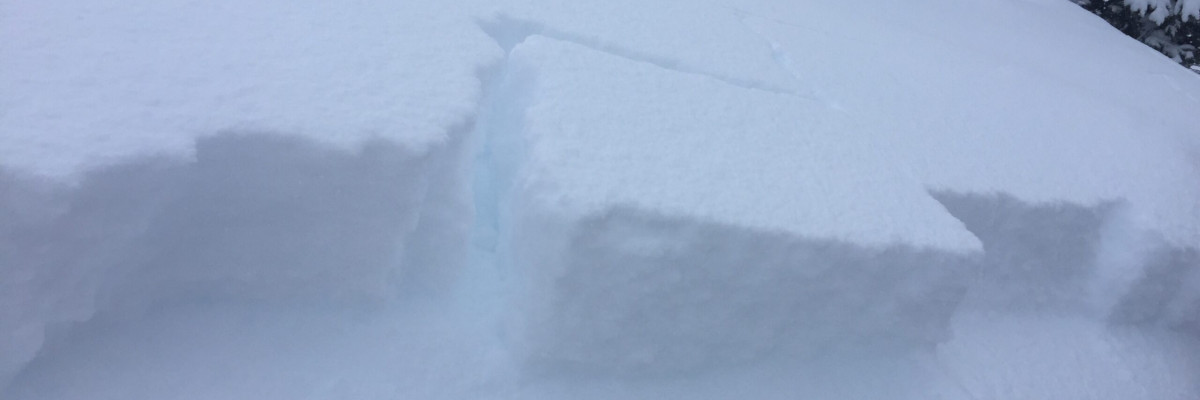The current avalanche danger for the west central Montana backcountry is Considerable. Dangerous avalanche conditions are present. Careful snowpack evaluation, cautious route-finding, and conservative-decision making are essential to recreate today.
Good morning, this is Travis Craft with the West Central Montana Avalanche Center’s avalanche advisory for January 19, 2019. This danger rating does not apply to operating ski areas, expires at midnight tonight and is the sole responsibility of the U.S. Forest Service.
Weather and Snowpack
Mountain temperatures range from 23 F to 27 F. In the Bitterroot winds are 14 mph with gusts of 27 mph out of the SSE. In the northern part of the advisory area, winds are 15 mph and gusting to 19 mph out of the East. 2 inches of new snow overnight, and it is currently snowing in the mountains.
Yesterday we saw natural avalanches of storm slabs on slick crusts. Logan and I found the storm slabs to be settling out throughout the day and bonding to the old snow surfaces. Moderate to strong winds were cross loading some slopes, ridgetops, and creating large cornices.
The primary avalanche problem is wind drifted snow. Moderate to strong winds have deposited wind slabs on leeward terrain. Look for smooth rounded pillows and drifts on ridges and cross-loaded slopes. Identify these slopes and avoid traveling on them. These slabs will be sensitive to human triggers today.
The second avalanche problem is persistent slabs. Yesterday’s snow fell on slick crusts and in mid elevations(5000ft to 6500ft) surface hoar. These layers released naturally yesterday but on slopes that did not release, are primed for human triggering. The deeper layers(facets on the ground and earlier buried surface hoar) were not reactive in tests yesterday; these layers are guilty until proven otherwise. Dig a pit to see how the new snow has bonded to the old snow surface and if buried surface hoar is present on the slope, dig down to the ground to see if the facets and buried surface hoar are reactive to the new load of snow. These layers can surprise us by becoming active again after weeks of being dormant.
Bottom line: The snowpack is adjusting to the new load of snow. Avoid wind drifted slopes. Dig a pit and see how the fresh snow is bonding and if the persistent weak layers are reactive in pit tests. Pay attention to changing weather conditions and avalanche conditions. Look for shooting cracks, natural activity, and collapses; these are clues to instabilities in the snowpack. Choose lower angle terrain(less than 30 degrees).
Avalanche and Weather Outlook
Snow is forecasted for today and into Sunday. See the forecast here. The mountains are predicted to get 3-7 new inches of snow. Expect the avalanche danger to rise.
If you get out into the mountains, please share what you see on our public observations page. They are not only helpful to your community but extremely helpful to us.
Ski and ride safe.














